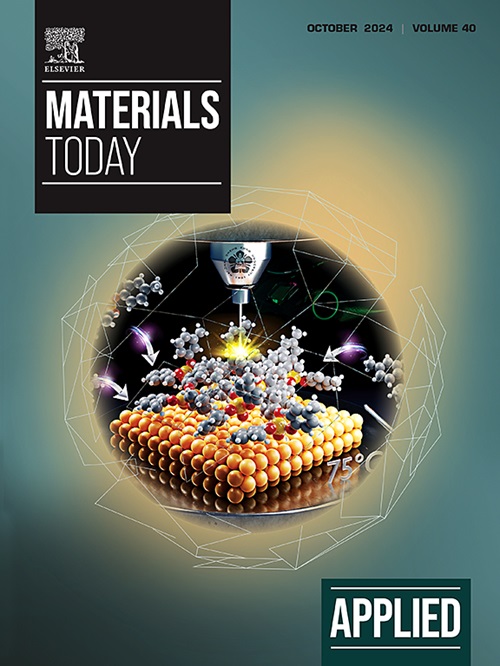Efficient catalytic debinding feedstock design for material extrusion additive manufacturing of low warpage and high-density titanium alloy
IF 6.9
2区 材料科学
Q1 MATERIALS SCIENCE, MULTIDISCIPLINARY
引用次数: 0
Abstract
Titanium alloy, known for its high strength and excellent biocompatibility, is widely used in aerospace, biomedical, and other fields. Material extrusion-based 3D printing offers a rapid design and effective way to fabricate complex shape part, but suffered from the time-consuming debinding and poor relative density. POM (Polyformaldehyde)-based binder has the fastest removal efficiency to achieve the debinding and sintering of parts with large cross-section. However, both the high viscosity and crystallinity limits its application in extrusion printing. In this paper, we significantly reduced the viscosity of POM-based feedstock by adding the plasticizer DOP (Dioctyl Phthalate). The crystallization properties and printing effects of conventional PP (Polypropylene) and newly developed PS (Polystyrene) as backbone binder were studied. The results showed that high crystallization increased the shrinkage of feedstock, causing warping and reduced mechanical properties of Ti-6Al-4V. With the PS as the backbone binder, the crystallization capacity of the feedstock was decreased and the warping was improved. High-density (98.62 ± 0.25 %) titanium alloy (TC4) was obtained, with an ultimate tensile strength of 948.4 ± 3.7 MPa, an elongation of 5.91 ± 0.9 %. 3D cubic samples with thickness of 30, 35, and 40 mm and a scaled human leg bone model with a thickness of 23 mm were successfully fabricated. This study has reference significance for the application of 3D printing of POM-based binder system and the preparation of titanium alloy with large cross-section.用于低翘曲和高密度钛合金材料挤压添加制造的高效催化脱脂原料设计
钛合金以其高强度和优异的生物相容性而著称,被广泛应用于航空航天、生物医学等领域。基于材料挤压的三维打印技术为复杂形状零件的制造提供了一种快速设计和有效的方法,但却存在去胶耗时和相对密度差的问题。基于聚甲醛(POM)的粘合剂具有最快的去除效率,可实现大截面零件的排胶和烧结。然而,高粘度和高结晶性限制了其在挤出印刷中的应用。本文通过添加增塑剂 DOP(邻苯二甲酸二辛酯),大大降低了 POM 基原料的粘度。研究了传统 PP(聚丙烯)和新开发的 PS(聚苯乙烯)作为骨架粘合剂的结晶特性和印刷效果。结果表明,高结晶度增加了原料的收缩率,导致翘曲并降低了 Ti-6Al-4V 的机械性能。以 PS 作为骨干粘合剂后,原料的结晶能力降低,翘曲情况得到改善。获得的高密度(98.62 ± 0.25 %)钛合金(TC4)的极限拉伸强度为 948.4 ± 3.7 兆帕,伸长率为 5.91 ± 0.9 %。成功制作了厚度为 30 毫米、35 毫米和 40 毫米的三维立方体样品以及厚度为 23 毫米的按比例人体腿骨模型。该研究对基于 POM 的粘结剂系统的三维打印应用和大截面钛合金的制备具有参考意义。
本文章由计算机程序翻译,如有差异,请以英文原文为准。
求助全文
约1分钟内获得全文
求助全文
来源期刊

Applied Materials Today
Materials Science-General Materials Science
CiteScore
14.90
自引率
3.60%
发文量
393
审稿时长
26 days
期刊介绍:
Journal Name: Applied Materials Today
Focus:
Multi-disciplinary, rapid-publication journal
Focused on cutting-edge applications of novel materials
Overview:
New materials discoveries have led to exciting fundamental breakthroughs.
Materials research is now moving towards the translation of these scientific properties and principles.
 求助内容:
求助内容: 应助结果提醒方式:
应助结果提醒方式:


